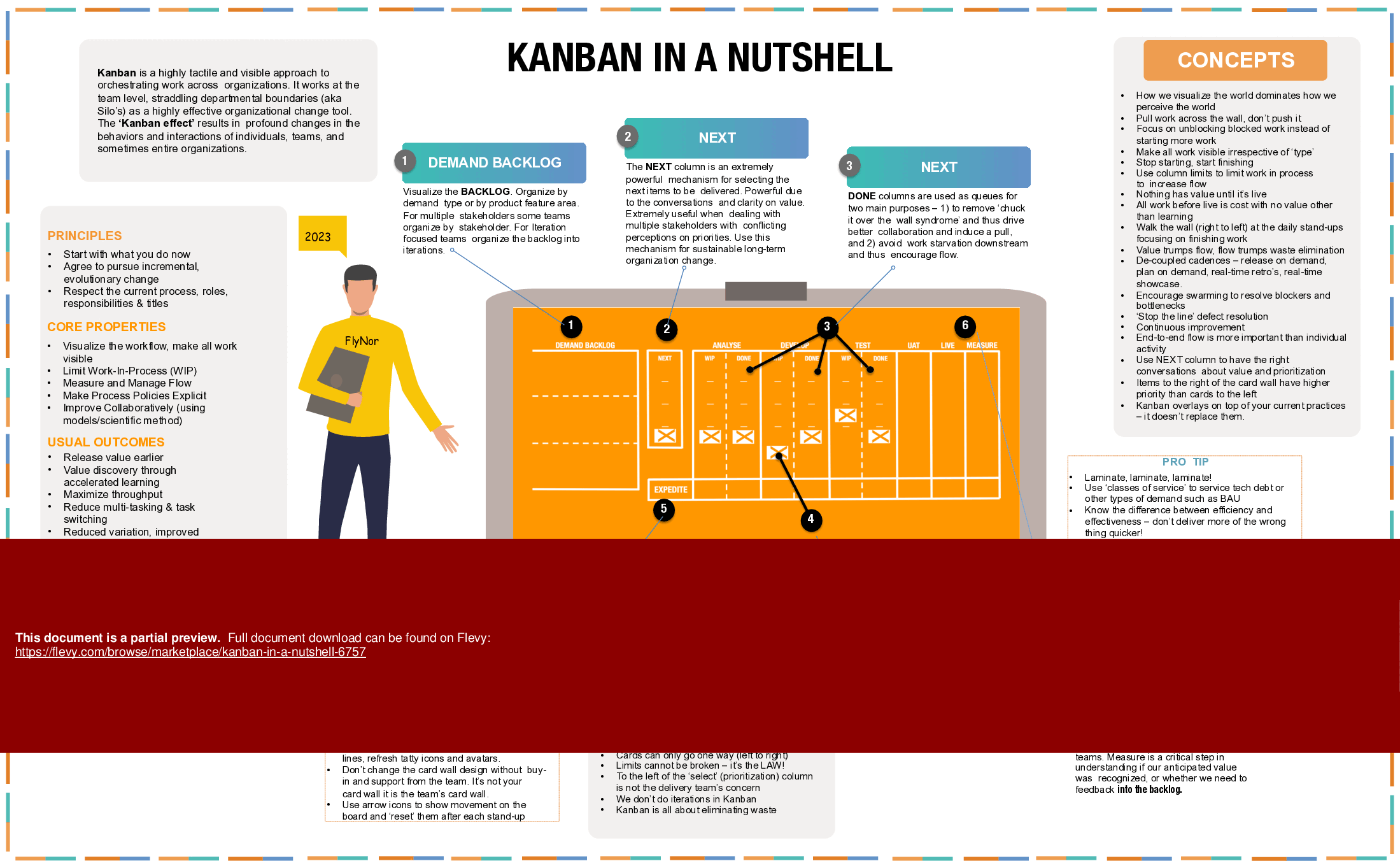Kanban in a Nutshell (PDF)
PDF document 1 Pages
KANBAN PDF DESCRIPTION
Kanban (Japanese: カンバン and Chinese: 看板, meaning signboard or billboard) is a scheduling system for lean manufacturing (also called just-in-time manufacturing, abbreviated JIT). Taiichi Ohno, an industrial engineer at Toyota, developed kanban to improve manufacturing efficiency. The system takes its name from the cards that track production within a factory. Kanban is also known as the Toyota nameplate system in the automotive industry.
KANBAN is a highly tactile and visible approach to orchestrating work across organizations. It works at the team level, straddling departmental boundaries (aka Silo's) as a highly effective organizational change tool. The ‘Kanban effect' results in profound changes in the behaviors and interactions of individuals, teams, and sometimes entire organizations.
This One-Page document contains :
PRINCIPLES
CORE PROPERTIES
USUAL OUTCOMES
METRICS
MAIN CONCEPTS
MYTHS
PRO TIP
THE OVERALL KANBAN FLOW
This document helps you understand briefly all relevant concepts related to the KANBAN Methodology.
The one-page PDF document, as a poster, can be used as a fast-training material for your team in the context of a Project or Program.
Got a question about the product? Email us at support@flevy.com or ask the author directly by using the "Ask the Author a Question" form. If you cannot view the preview above this document description, go here to view the large preview instead.
Source: Best Practices in Kanban PDF: Kanban in a Nutshell PDF (PDF) Document, RadVector Consulting


